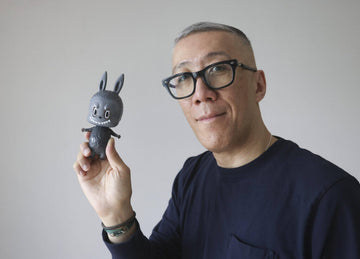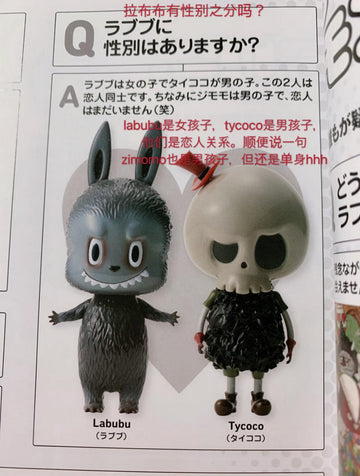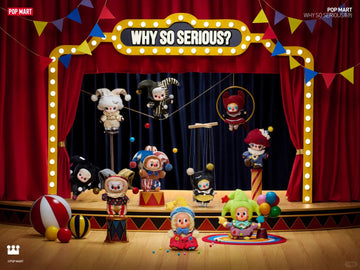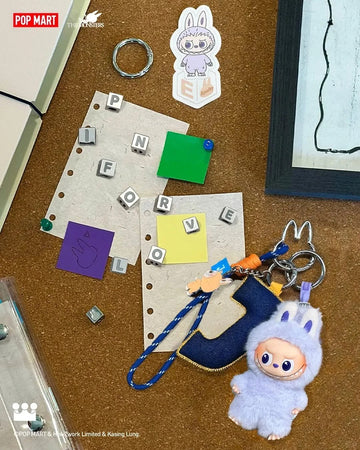In recent years, a furry elf-like character with sharp teeth named LABUBU has taken the world by storm. From a new favorite in Pop Mart's blind box lineup to a must-have accessory for celebrities and fashion influencers, LABUBU's success is no accident. It's more than just a cute toy; it's a textbook example of a perfectly executed "Product Design + Art Business" combo.
The logic behind this success has long been explored and practiced in the world's top art and design schools. Today, let's deconstruct LABUBU's winning strategy and see how it aligns with the philosophies of world-class design education.
Strategy 1: The Art of Precise Design Evolution & Aesthetic Balance
An IP's success begins with its image. LABUBU's design evolution is a masterclass in market insight and aesthetic refinement.
-
From "Ugly-Cute" to "Mischievously Adorable" (#1.0 -> #2.0):
The original LABUBU (#1.0) had a "quirky, bizarre, ugly-cute" vibe with a squarish face and narrow eyes. While unique, its appeal was niche. The design team astutely evolved it into the #2.0 version, rounding the face, enlarging the eyes into perfect circles, and giving it a more innocent expression. This shift from niche aesthetics to mass-market appeal dramatically expanded its audience, cementing its core "mischievously adorable" IP identity.

-
From "Cute" to "Healing" (#3.0):
In its latest #3.0 iteration, LABUBU appeared as a plush keychain. The head-to-body ratio became more "chibi" (q-version), making its overall form more "cute, healing, and rounded". The plush material and pastel, macaron-like color palette amplify a "soft" and comforting feeling, satisfying consumers' emotional need for warmth and companionship.

-
The Golden Ratio: 80% Cute + 20% Quirk:
Crucially, even as it became cuter, LABUBU retained its core identifying feature: the 9 sharp teeth. This small element of "quirk" makes it stand out in a sea of uniformly cute characters. It strikes a perfect balance: using the sharp teeth for brand recognition, while using big eyes, a round face, and plush texture to create a sense of closeness.

Strategy 2: Scene Expansion - Taking the IP from Static to Dynamic
If design is the attraction, then scene expansion is the lifeblood. A huge part of LABUBU's success comes from breaking free of the "display-only" fate of many collectibles.
By introducing "movable" and "wearable" product forms like keychains and bag charms, LABUBU cleverly moved from a static display cabinet into the consumer's daily life. It's no longer just a toy but a social medium and a statement of identity. Hanging on a bag, it becomes part of an outfit; at a gathering with friends, it becomes a conversation starter. This design approach dramatically expands the IP's usage scenarios, invisibly increasing its exposure and effectively extending its lifecycle.
Strategy 3: The Business Engine - A Chain Reaction to Ignite Desire
Great design needs a powerful business strategy to go viral. Pop Mart's celebrated blind box mechanism was pushed to its limits with the LABUBU series.
- Manufacturing Scarcity and Surprise: Frequent series updates, secret "chase" figures, limited editions, and brand collaborations make every unboxing feel like a lottery. The thrill of the unknown creates an addictive rush and significantly boosts purchase frequency.
- The Celebrity Effect: With endorsements and appearances from top stars like Fan Bingbing, Ouyang Nana, Lisa, and Jackson Wang, LABUBU quickly became a celebrity-approved item. This massive influx of traffic propelled it from the niche designer toy circle into the mainstream fashion world.

The Design Education Behind the Success: How Top Schools Cultivate "Designer Toy" Thinking
LABUBU's strategy isn't magic; the design thinking, IP construction, and business logic behind it are central to the curriculum at the world's leading design schools.
-
Japan: The Fusion of Traditional Craft and Pop Culture
LABUBU's exquisite form is built on a solid foundation of modeling skills, a specialty of Japanese art schools.- Osaka University of Arts: Its Character Modeling department systematically teaches designer toy creation, with a curriculum covering the entire process from 3D modeling (ZBrush/Blender) to painting, often in collaboration with actual toy companies.
- Tokyo University of the Arts: Its Sculpture department emphasizes combining traditional sculpting training (wood, bronze) with new material experiments (transparent resin), giving students a strong modeling foundation and opportunities to develop IP derivatives with partners like Toho Animation.
-
USA: The Frontier of Entertainment and Commercial Design
LABUBU's complete IP worldview and commercialization path perfectly reflect the essence of American design education.- ArtCenter College of Design: The Entertainment Design program emphasizes narrative-driven design. Courses on "character backstory development" and "IP cross-media extension" aim to cultivate a mindset for managing an IP's entire lifecycle.
- Rhode Island School of Design (RISD): As a world-leading institution, its Industrial Design program focuses on developing students' design skills and aesthetic sensibilities, producing work known for its strong innovation and practicality—the very foundation of a successful product.
-
Europe: The Vanguard of Experimental Design and Cultural Critique
The emotional value and brand narrative that LABUBU carries resonate with the philosophies of European design schools.- Central Saint Martins (CSM): Its Product Design program encourages cross-disciplinary collaboration (e.g., with fashion or drama departments) and integrates "Brand Narrative" theory to guide students in building an IP worldview connected to emotion.
- Design Academy Eindhoven (DAE): Renowned for combining conceptual design with social issues, DAE encourages students to use design to explore deeper questions. This way of thinking—using a product as a vehicle for expressing diverse cultures or identities—is key to creating an IP that resonates on a profound level.
Conclusion
The LABUBU case study shows that a phenomenal IP is born from the combination of precise image design, clever scene expansion, and a powerful business mechanism. This is not just a commercial victory; it is a successful real-world application of the "Product Design + Art Business" philosophy.
Its success proves that whether you are a product designer or a brand manager, a cross-disciplinary perspective is essential. One needs the craftsmanship and modeling skills of Japanese schools, the business acumen and IP storytelling of American schools, and the humanistic depth and brand-building of European schools. This masterclass, brought to you by LABUBU, is worth deep consideration by every professional in the creative industries.



